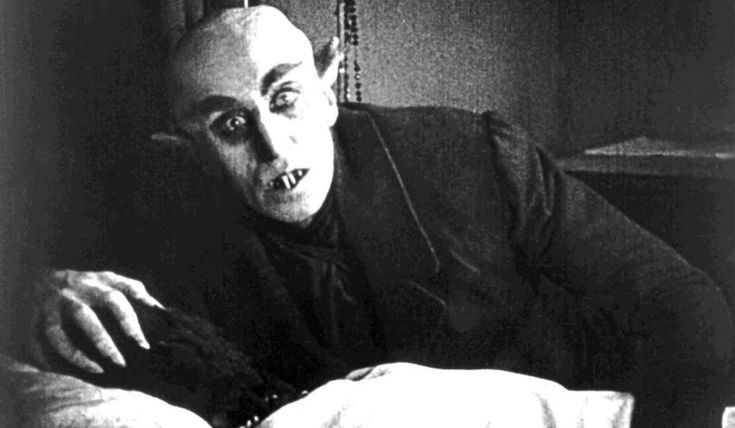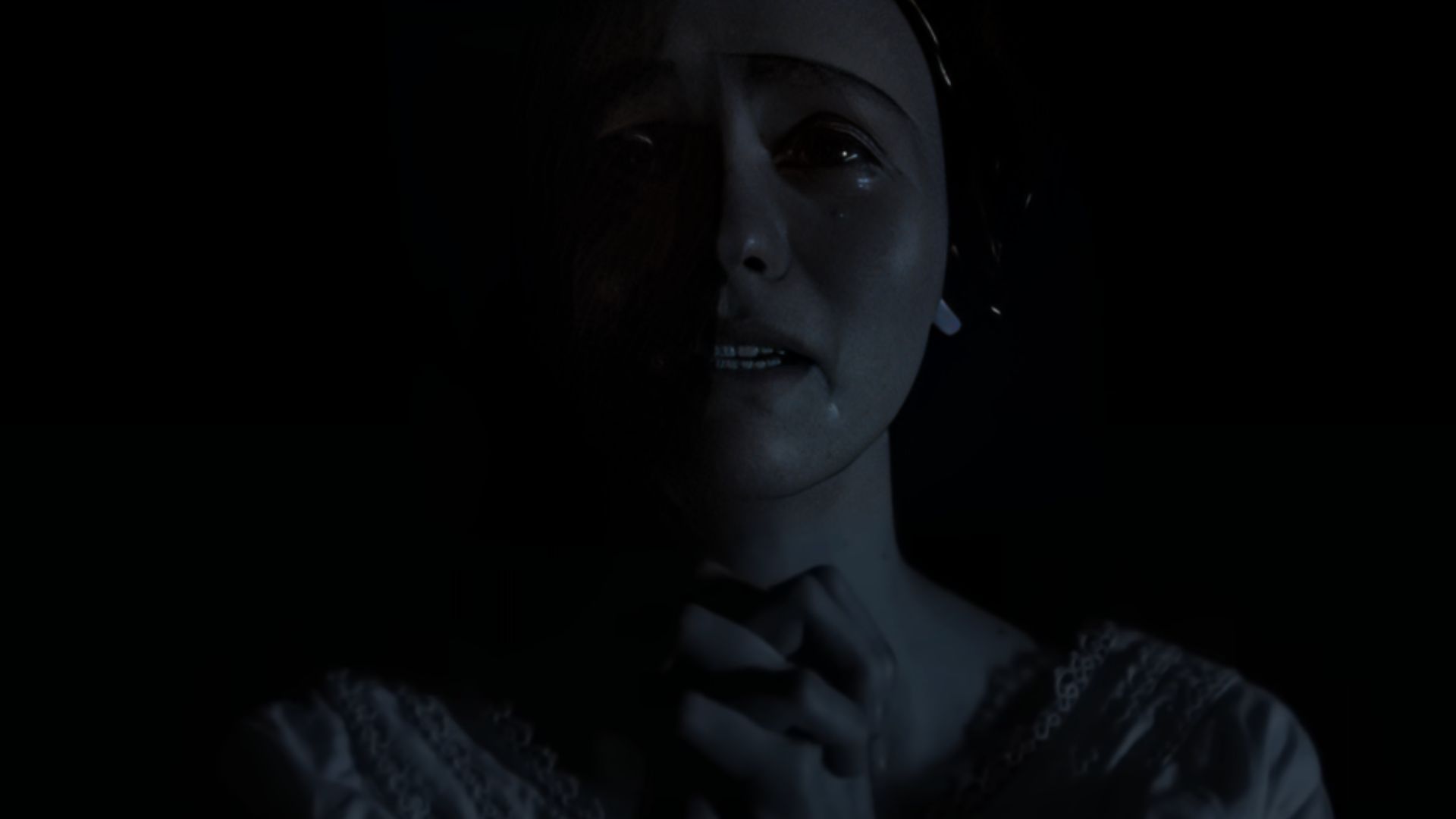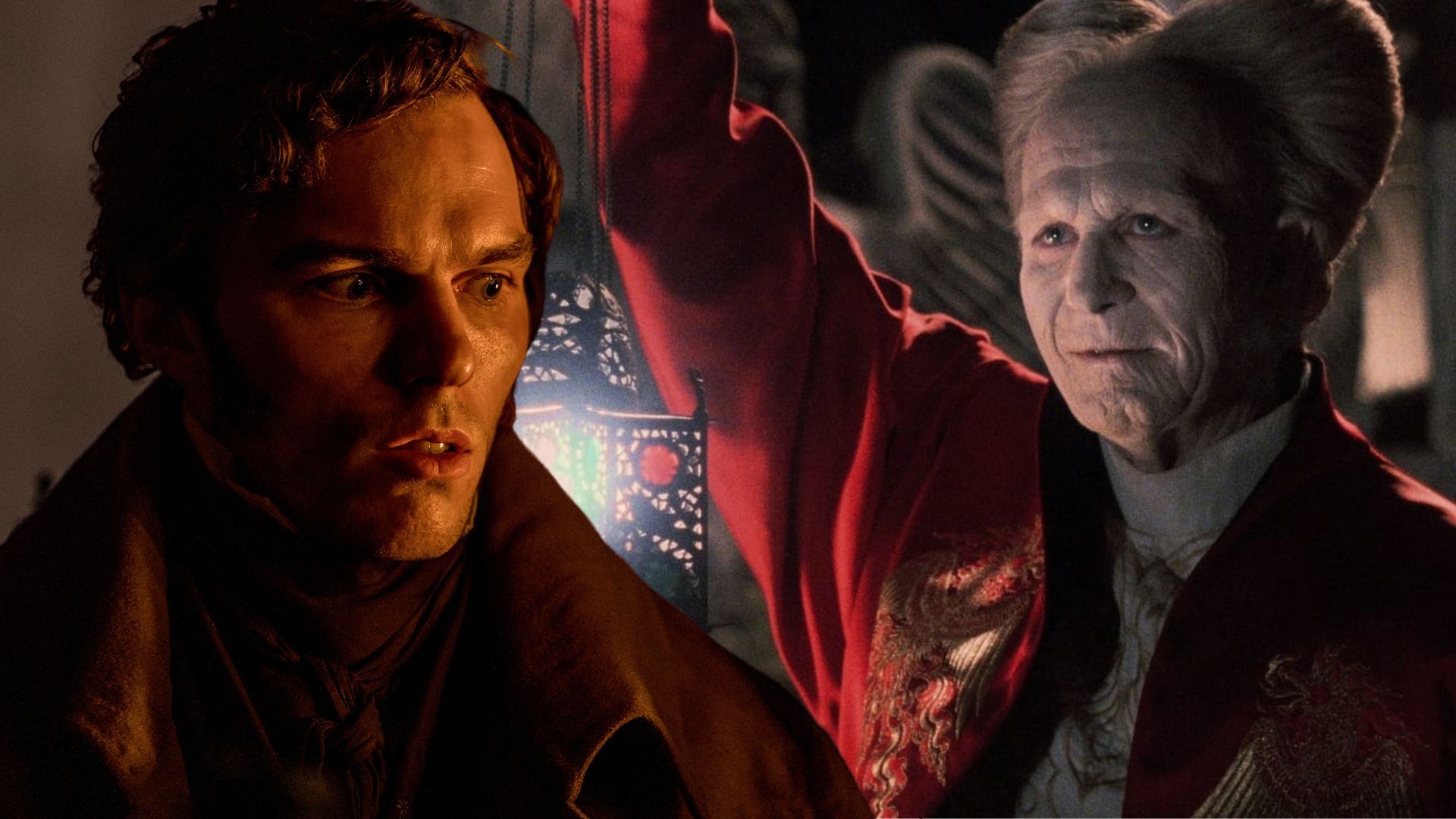Why Is Dracula Called Nosferatu? Unraveling A Century-Old Mystery
Detail Author:
- Name : Nia Lynch
- Username : slynch
- Email : yoreilly@gmail.com
- Birthdate : 2000-02-21
- Address : 3637 Fletcher Stravenue Davisberg, WI 26010
- Phone : +1 (726) 449-6689
- Company : Runolfsson-Schoen
- Job : Supervisor Correctional Officer
- Bio : Aliquam molestiae ut modi praesentium autem ad accusamus. Delectus voluptatem nam odio incidunt fugiat assumenda.
Socials
tiktok:
- url : https://tiktok.com/@jewell6132
- username : jewell6132
- bio : Consectetur illum animi placeat et facilis et. Ab voluptatem esse rerum quis.
- followers : 5562
- following : 1257
instagram:
- url : https://instagram.com/jewellsanford
- username : jewellsanford
- bio : Voluptas voluptate est mollitia est et autem. Dolorem beatae qui nemo earum et corporis.
- followers : 6551
- following : 1871
linkedin:
- url : https://linkedin.com/in/jsanford
- username : jsanford
- bio : Et sit autem corporis eos cum dolorum.
- followers : 6732
- following : 2153
twitter:
- url : https://twitter.com/jewell_xx
- username : jewell_xx
- bio : Distinctio et recusandae consequuntur ratione quisquam. Sint beatae nam dicta. Et aut ut recusandae impedit magnam.
- followers : 944
- following : 242
facebook:
- url : https://facebook.com/sanfordj
- username : sanfordj
- bio : Eum deserunt natus totam nemo quo repellat a possimus.
- followers : 3141
- following : 769
Have you ever found yourself wondering about the origins of vampire lore, particularly the famous names associated with it? It's a common thing, you know, to ask "why" when something catches your curiosity. For many who love classic horror, a big question often pops up: Why is Dracula, the iconic bloodsucker, sometimes called Nosferatu? It's a really interesting puzzle, actually, and it has roots in some fascinating history. We often ask for reasons in speaking, and this is certainly a question that begs for a good explanation, like your typical "why is that?" kind of moment.
The meaning of "why" is for what cause, reason, or purpose, and that's precisely what we're looking into here. This isn't just a simple name swap; there's a whole story behind it involving books, movies, and a bit of legal drama. It's a tale that shows how art can change and adapt over time, even when it's about something as enduring as a creature of the night. So, in some respects, it's about understanding the journey of a legendary figure.
You use "why" in questions when you ask about the reasons for something, and today, we're going to explore the compelling reasons behind this famous naming mix-up. We'll look at the original novel, the very first vampire movie, and how these two pieces of art, though connected, ended up with different names for essentially the same chilling character. It's quite a story, honestly, about how a character can take on different forms.
Table of Contents
- The Curious Case of Names: Dracula and Nosferatu
- So, Why the Name Change?
- Are They Really the Same Being?
- Frequently Asked Questions
The Curious Case of Names: Dracula and Nosferatu
It's fascinating, isn't it, how two names can become so intertwined in our minds, even when they come from different places? The connection between Dracula and Nosferatu is a classic example of this. To really get to the bottom of "why is Dracula called Nosferatu?", we need to go back in time a bit, to the early days of vampire stories in popular culture. Basically, it's about tracing the lineage of a very famous monster.
The word "why" serves as a fundamental tool in language for seeking explanations, and that's what we're doing here: seeking the cause or reason that explains this naming. It's not just a random choice; there's a clear chain of events that led to this situation. Understanding these origins helps us appreciate the richness of vampire mythology and how it has evolved over the years, which is pretty cool, actually.
The Birth of Bram Stoker's Dracula
Our story really starts with Bram Stoker, an Irish writer who, in 1897, gave the world one of its most enduring literary figures: Count Dracula. This novel, simply titled "Dracula," introduced us to a charismatic, yet utterly terrifying, Transylvanian nobleman who was, in fact, an ancient vampire. Stoker's creation wasn't the first vampire in literature, but it certainly became the most famous, and still is, more or less.
Stoker drew from various sources for his character, including folklore about vampires and even historical figures like Vlad the Impaler. His Dracula was a complex character, a master of disguise and manipulation, who could move between the shadows and polite society. The book set many of the rules for what we now consider a "classic" vampire, like their aversion to sunlight, garlic, and religious symbols. It's the original blueprint, you could say, for how many people picture a vampire.
The novel was a huge success, captivating readers with its gothic atmosphere and chilling suspense. It cemented the name "Dracula" in the public consciousness as the ultimate vampire. So, when we ask "why hasn't he brought the bill" for a new adaptation, it's often because the original is so strong. It became the benchmark, a truly powerful story that still holds up today, which is pretty amazing, really.
F.W. Murnau's Vision: The Film "Nosferatu"
Fast forward a few decades to 1922, and we come to Germany, where a groundbreaking silent film was being made. This movie was called "Nosferatu, a Symphony of Horror," and it was directed by the visionary F.W. Murnau. If you've ever seen it, you know it's a truly unsettling and artistic piece of cinema. It's one of those films that just sticks with you, you know?
The film told a story that was, to put it mildly, strikingly similar to Bram Stoker's "Dracula." It featured a pale, gaunt vampire named Count Orlok, who moved to a new city and brought plague and terror with him. The plot points, the characters, even specific scenes, mirrored Stoker's novel very closely. It was, in essence, an unauthorized adaptation of "Dracula." This is where the "why didn't he stop me" question comes into play for the Stoker estate, as we'll see.
Murnau's "Nosferatu" introduced a different kind of vampire, one that was less a charming aristocrat and more a monstrous, rat-like creature, a true bringer of disease. Max Schreck's portrayal of Count Orlok is iconic and still gives people the creeps today. It's a very different take on the vampire, almost a more primal version, you could say, and it left a lasting mark on horror cinema, too it's almost a separate entity.
So, Why the Name Change?
This is where the heart of our "why" question truly lies. If "Nosferatu" was so clearly based on "Dracula," why didn't Murnau just call his vampire Dracula? This is a prime example of why we ask about the reasons for something, because the answer reveals a lot about the creative and legal landscape of the time. It's not just a random switch, but a calculated move, basically.
The cause or reason that explains something is what we're after, and in this case, it boils down to a very practical, yet dramatic, issue. The filmmakers behind "Nosferatu" knew they were adapting a popular book, but they faced a significant hurdle that prevented them from using the original names and story elements directly. This is a very common situation in creative works, as a matter of fact.
Copyright Conundrums and Creative Liberties
The primary reason "Dracula" became "Nosferatu" in the film was copyright. Bram Stoker's novel was still under copyright protection in 1922 when Murnau's film was made. The filmmakers, specifically the studio Prana Film, did not obtain the necessary rights from Stoker's widow, Florence Stoker. They tried to make an unauthorized adaptation, hoping to avoid paying for the rights. This is why we often ask "why can't I remember the exact year we married?" for important dates, because legal details really matter.
To try and get around the copyright issues, Prana Film changed many of the names and locations from the novel. Count Dracula became Count Orlok, Jonathan Harker became Thomas Hutter, and so on. The title itself was changed from "Dracula" to "Nosferatu." These changes were meant to disguise the film's origins, to make it seem like an original work rather than a direct copy. It was a pretty bold move, honestly, to try and pull that off.
However, Florence Stoker was not easily fooled. She recognized her late husband's work immediately and launched a massive lawsuit against Prana Film for copyright infringement. She fought tirelessly to protect her husband's legacy, and she eventually won. The court ordered all copies of "Nosferatu" to be destroyed. This was a huge blow to the filmmakers, and it really highlights the importance of intellectual property, you know?
Thankfully for us, some copies of "Nosferatu" survived, making it one of the most influential horror films ever made. But the legal battle is the key "why" behind the name change. It was a desperate attempt to avoid legal repercussions, a choice made with what intention, justification, or motive? To make a film without paying for the story, basically.
The Meaning Behind "Nosferatu"
So, where did the name "Nosferatu" even come from? This is another interesting layer to our "why" question. The word itself has a somewhat mysterious origin, and it adds to the film's eerie atmosphere. It's not a made-up word, but its exact meaning and etymology are a bit debated, which makes it even more intriguing, in a way.
Many believe "Nosferatu" comes from the Old Slavonic word "nesuferatu" or "necuratu," which roughly translates to "unclean one" or "unholy one." This term was often used in Romanian folklore to describe a revenant or a vampire-like creature. It perfectly captures the monstrous, disease-ridden nature of Count Orlok in Murnau's film, much more so than the aristocratic "Dracula." It's a very fitting name for that particular portrayal, you know?
Interestingly, Bram Stoker himself encountered the word "nosferatu" in his research for "Dracula." He references it in his novel, though not as the vampire's name, but as a general term for a vampire or undead being. So, while Murnau used it as a specific name, Stoker knew of it as a broader concept. This just goes to show how intertwined these concepts were, even back then, and it's quite fascinating, actually.
The choice of "Nosferatu" for the film, therefore, wasn't entirely random. It was a word with existing connections to vampire lore, perhaps chosen to give the film a sense of authenticity while simultaneously distancing it from Stoker's copyrighted work. It was a clever, if legally problematic, move. It answers the "why" with a clear purpose, a specific intention, justification, or motive, as my text says.
Are They Really the Same Being?
Given all this, the question naturally arises: are Dracula and Nosferatu truly the same character? Or are they distinct entities despite their shared origins? This is a question that requires a bit of nuance, as there are elements of both similarity and striking difference. It's not a simple yes or no answer, which is often the case with these kinds of historical questions.
When we ask for reasons in speaking, we can use the phrase "why is that?" and for this question, the "that" involves both literary inspiration and artistic interpretation. While "Nosferatu" the film is undeniably an adaptation of "Dracula" the novel, the changes made for the screen, both intentional and unintentional, created a character that feels quite different. They are, in a way, two sides of the same coin, but with very distinct faces.
Character Traits and Cinematic Departures
Bram Stoker's Dracula is, first and foremost, a nobleman. He's charming, sophisticated, and capable of blending into human society. He's a creature of immense power, but also one who can appear quite human, at least initially. His horror comes from his deceptive nature and his ancient, predatory instincts. He's a very complex figure, a bit of a smooth talker, actually.
Murnau's Count Orlok, the "Nosferatu," is a very different beast. He's grotesque, almost rodent-like in appearance, with long fingers and pointed ears. He doesn't charm; he simply repulses. His presence brings plague and decay, making him less a seductive villain and more a walking embodiment of disease and death. He's a much more primal and unsettling figure, you know, a truly monstrous sight.
These differences in portrayal aren't just cosmetic. They reflect different artistic visions of what a vampire could be. Stoker's Dracula is a symbol of aristocratic evil and hidden desires, while Murnau's Nosferatu is a symbol of contagion and the horrors of war (given the film's post-WWI context). So, while the story beats are similar, the spirit of the characters feels quite distinct. It's a really interesting contrast, to be honest.
The Lasting Impact on Vampire Lore
Despite the legal battles and the differing portrayals, both "Dracula" and "Nosferatu" have left an indelible mark on vampire lore. Stoker's novel gave us the name and many of the classic vampire characteristics that persist to this day. It's the foundation for so much of what we think about vampires. It's the reason "why hasn't he brought the bill" for vampire movies often references Stoker.
Murnau's "Nosferatu," even with its legal troubles, introduced powerful visual elements that became part of the vampire mythos. The idea of the vampire as a truly hideous, non-human monster, and the association of vampires with plague and rats, largely comes from this film. It showed that vampires could be more than just suave villains; they could be truly terrifying forces of nature. It's a very influential film, in a way, shaping how we see these creatures.
So, are they the same being? In terms of the core story, yes, "Nosferatu" is an adaptation of "Dracula." But in terms of character, aesthetic, and thematic focus, they are quite distinct interpretations of the vampire. The name "Nosferatu" became a synonym for a certain type of vampire – the ancient, grotesque, plague-carrying kind – separate from the more debonair Dracula. It's a complex legacy, really, one that continues to fascinate us.
Frequently Asked Questions
Here are some common questions people often have about this fascinating topic:
Are Nosferatu and Dracula the same character?
While the 1922 film "Nosferatu" is an unauthorized adaptation of Bram Stoker's novel "Dracula," they are not exactly the same character. Count Orlok in "Nosferatu" is based on Count Dracula, but changes were made to his name, appearance, and some character traits due to copyright issues. Orlok is often depicted as more monstrous and less charming than Stoker's Dracula, so it's a bit of a nuanced answer, you know?
What does "Nosferatu" mean?
The word "Nosferatu" is believed to derive from an Old Slavonic term, possibly "nesuferatu" or "necuratu," which translates to something like "unclean one" or "unholy one." It was a term found in some Eastern European folklore related to the undead or vampire-like beings. Bram Stoker himself encountered the word during his research for "Dracula," too it's almost a piece of the original puzzle.
Why was Nosferatu made without permission?
The German film studio Prana Film made "Nosferatu" in 1922 without obtaining the rights from Bram Stoker's widow, Florence Stoker. They attempted to avoid copyright infringement by changing character names, locations, and the title of the story. However, Florence Stoker successfully sued them, leading to a court order for all copies of the film to be destroyed. This is a classic example of "why didn't he stop me" when it comes to intellectual property, actually.
The word "why" serves as a fundamental tool in language for seeking explanations, and as we've explored, the story of Dracula and Nosferatu is a perfect example of this. It's a tale that weaves together literary genius, cinematic innovation, and legal battles, all centered around one of the most enduring figures in horror. This fascinating connection continues to spark curiosity, and it's a testament to the lasting power of these stories, you know, how they just keep coming back.
If you're interested in learning more about the rich history of gothic literature, you can Learn more about classic horror on our site. And to explore other famous monsters and their origins, perhaps you'd like to check out our page on mythical creatures. There's so much more to discover, basically, about the things that go bump in the night.


